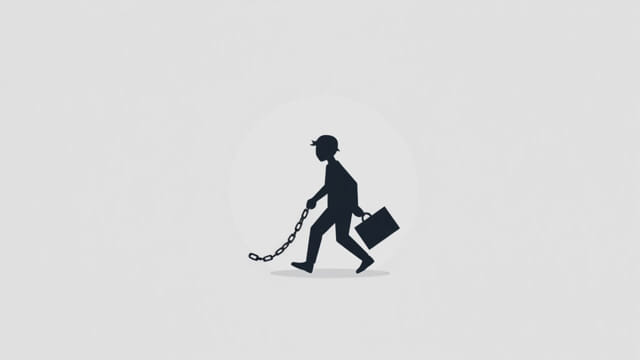Debt Peonage US History
Debt peonage, also known as debt slavery or debt servitude, is a system where laborers are bound to work for a landowner or employer due to debt. In U.S. history, this practice persisted long after slavery was officially abolished, particularly in the post-Civil War South. Despite the promise of freedom and equal opportunity, many African Americans and poor whites became trapped in cycles of debt that severely limited their autonomy and reinforced social and economic hierarchies. Debt peonage is a vital yet often overlooked aspect of U.S. history that highlights how systemic exploitation adapted to survive beyond the era of formal slavery.
Origins of Debt Peonage in the United States
Post-Civil War Transition
After the Civil War ended in 1865, the South underwent Reconstruction, a period marked by social upheaval and attempts to redefine labor and citizenship. The 13th Amendment abolished slavery, but it included a clause permitting involuntary servitude as punishment for a crime. This loophole, combined with economic instability, set the stage for alternative forms of forced labor.
Rise of Sharecropping and Tenant Farming
Many freed African Americans lacked land, tools, and money. With few options, they entered into agreements with white landowners as sharecroppers or tenant farmers. These arrangements often involved borrowing supplies and living necessities on credit, with repayment expected after the harvest. However, unpredictable markets and exploitative practices often left workers deeper in debt than when they started.
The Mechanics of Debt Peonage
Cycle of Indebtedness
Debt peonage relied on a vicious cycle that was difficult to escape. Workers would:
- Borrow money or goods from landowners or storekeepers.
- Work the land in exchange for a share of the crop.
- Owe more after harvest due to inflated prices or poor yields.
- Be legally or physically forced to remain and repay the debt.
This system ensured a perpetual labor force for landowners and created generations of economic dependence and poverty.
The Role of Company Stores
Company stores, especially in mining and agricultural regions, played a central role in enforcing debt peonage. Workers were often paid in scrip, a company-issued currency that could only be used at the employer’s store. Prices were inflated, and credit was easy to acquire but nearly impossible to repay, keeping workers economically captive.
Legal and Social Reinforcement
Black Codes and Vagrancy Laws
Southern states enacted ‘Black Codes’ to restrict the freedom of African Americans. These laws criminalized unemployment, loitering, and breach of labor contracts. Violators could be arrested and fined, with unpaid fines leading to forced labor. These laws were designed to coerce Black Americans back into plantation-style work under the guise of legality.
Convict Leasing System
Another form of debt peonage was the convict leasing system. States leased prisoners to private businesses, including railroads, plantations, and mines. Many of these prisoners were African Americans convicted under discriminatory laws. The system provided cheap labor to businesses and became a source of revenue for Southern states, while prisoners endured harsh, exploitative conditions.
Resistance and Reform
Legal Challenges and Federal Involvement
In the early 20th century, some cases brought national attention to the issue of peonage. One notable example was the 1903 case involving John W. Pace, a wealthy landowner in Alabama accused of holding workers in involuntary servitude. Investigations by the Department of Justice led to increased enforcement of anti-peonage laws.
The Peonage Act of 1867 had officially outlawed debt peonage, but enforcement was minimal. It wasn’t until the 20th century that federal authorities began prosecuting offenders more rigorously. The Department of Justice, under the leadership of figures like Attorney General Charles Bonaparte, pursued dozens of cases in the early 1900s.
Journalism and Advocacy
Writers, journalists, and activists also played a role in exposing debt peonage. Investigative reports revealed the harsh conditions in Southern labor camps and mines. Organizations like the NAACP and labor unions advocated for stronger protections and equal labor rights, contributing to public awareness and policy changes.
Decline and Legacy
Great Depression and Labor Shifts
The Great Depression of the 1930s led to widespread economic change and federal intervention in labor markets. New Deal programs such as the Works Progress Administration (WPA) provided alternative employment, helping to undermine the necessity and power of debt-based labor systems.
World War II and Industrial Growth
During and after World War II, industrialization and urban migration reduced the dominance of agriculture in the Southern economy. This shift helped diminish the prevalence of peonage, although economic inequality and labor exploitation persisted in other forms.
Enduring Impact
While debt peonage officially ended decades ago, its legacy lingers. The economic structures it reinforced contributed to generational poverty, especially among African Americans in the South. Understanding this system is crucial to examining modern issues of wage theft, labor abuse, and systemic inequality.
Contemporary Reflections
Modern-Day Parallels
Though illegal today, forms of debt bondage still exist in various industries, particularly among undocumented workers, prison laborers, and in the global supply chain. These conditions mirror the dynamics of historical peonage, where vulnerable workers have limited choices and are trapped by debt or coercion.
Calls for Reparations and Justice
Historians and social justice advocates continue to study debt peonage as part of broader discussions about reparations for descendants of enslaved and exploited people. Recognizing the hidden history of labor exploitation is essential for crafting fair labor policies and addressing systemic injustice.
Debt peonage in U.S. history serves as a sobering reminder of how freedom can be undermined by economic manipulation. Though slavery was abolished, systems of coercive labor persisted in new forms, particularly through sharecropping, company stores, and unjust laws. These systems disproportionately affected African Americans, perpetuating cycles of poverty and dependence. The struggle against peonage helped lay the groundwork for modern labor rights, but its legacy remains relevant today. By understanding the mechanisms and consequences of debt peonage, we gain insight into the broader narrative of inequality and resistance in American history.
